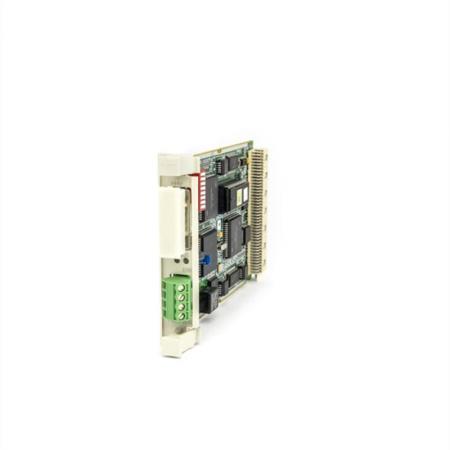ABB DAI03 Digital Input Module
The DI03 Digital Input Module can handle up to 16 individual digital input signals, each channel individually CH-2-CH isolated and supporting 24 VDC inputs. Each channel is individually CH-2-CH isolated and supports 24 VDC inputs.FC 221 (I/O Device Definition) sets the DI module as a parameter, and each input channel is configured using FC 224 (Digital Input CH) to set input channel parameters such as alarm status, de-jitter cycles, etc. The DI03 digital input module is also equipped with an I/O Device Definition (I/O Device Definition) to set the input channel parameters.
Features and Benefits
16 independent CH-2-CH isolated DI channels supported:
24 VDC digital input signals
Configurable contact debounce time up to 255 ms
DI03 module can sink or pull I/O currents
Input status LEDs on module front panel
1500 V current isolation for up to 1 minute
DI03 does not support SOE
Highly accurate signal conversion: ADC with 12-bit resolution accurately converts analogue signals to digital signals, ensuring accurate data acquisition in a wide range of industrial processes.
Rich communication interface: Equipped with RS-485 communication interface, it can be seamlessly integrated into the existing fieldbus network, which is convenient for connecting and data interaction with PLC and other control systems.
Wide Operating Range: With an operating temperature range of – 20°C to + 70°C and a humidity range of 5% to 95% non-condensing, it maintains reliable performance in harsh industrial environments.
Compact and Durable Design: Measuring 33.5×25.5x3cm and weighing 0.6kg, it is compact, easy to install, and has a high-strength housing that can withstand vibration, shock, and electromagnetic interference in industrial sites.
Powerful diagnostics: Advanced diagnostic features enable rapid fault identification and localisation, reducing system downtime and improving operational efficiency.
Technical Specifications
1.Physical Parameters
Net depth/length: 350.52mm, the size of the design of the internal circuitry to ensure a reasonable layout at the same time, easy to install in all kinds of control cabinets, equipment racks, will not occupy too much space, is conducive to saving the overall installation space of the equipment.
Net height: 129.54mm, moderate height, not only to meet the heat dissipation needs of the internal electronic components, but also with other modules or equipment in the vertical direction to achieve good cooperation and integration.
Net width: 482.6mm, this width allows the module to have enough input channels and functional circuits at the same time, maintain good structural stability, and facilitate wiring and connection with peripheral equipment.
Net weight: 0.22kg, light weight, not only easy to transport and install, but also in the process of equipment operation, will not bring too much burden to the support structure, help to improve the overall mechanical stability of the equipment.
2.Electrical Parameters
Channel type: DI (Digital Input), specially used for collecting digital signals on site and converting them into digital signal format suitable for control system recognition and processing.
Number of input channels: 16, can simultaneously access 16 digital signals, to meet the needs of most industrial automation scenarios for multi-channel signal acquisition. In the production line monitoring system of some large factories, it may be necessary to monitor the operation status of many devices (such as the start and stop of motors, the opening and closing of valves, etc.) at the same time, and the 16 input channels can effectively realise the centralised acquisition and transmission of status signals of these devices.
Resolution: 12-bit, higher resolution can more accurately identify and distinguish between different states of the digital signal, reduce signal error, improve the accuracy of data acquisition. In application scenarios requiring high signal accuracy, such as precision instrument manufacturing and high-end automated testing equipment, 12-bit resolution ensures that the collected digital signals accurately reflect the actual state of the field equipment, providing a reliable basis for subsequent control decisions.
Communication interface: RS-485, which is a widely used communication interface standard in the industrial field, has the advantages of long transmission distance (up to 1200 metres) and strong anti-interference ability. Through RS-485 interface, DAI03 can be conveniently connected with PLC, host computer and other devices to build a stable and reliable industrial communication network and realise rapid data transmission and sharing.
Voltage range: 24VDC, the module is powered by 24VDC DC power supply, which is a commonly used power supply voltage level in the field of industrial automation, and has the advantages of good power supply stability, easy to obtain and manage. In practical applications, it can easily share the power supply system with other 24VDC power supply equipment in the factory, reducing the complexity and cost of power supply configuration.
Operating Temperature: -20°C to +70°C. The wide operating temperature range allows it to adapt to a variety of extreme environmental conditions. Whether in the cold winter outdoor scenes in the north, or in the hot summer hot shop in the south, DAI03 can maintain normal working conditions, to ensure stable acquisition and transmission of digital input signals.
Humidity range: 5% to 95% non-condensing, can be normal operation in higher humidity environment, and is not affected by condensation phenomenon. In some production environments with high humidity, such as textile workshops, food processing workshops, etc., the module can work reliably, avoiding electrical failures caused by humidity problems and guaranteeing the long-term stable operation of the equipment.









